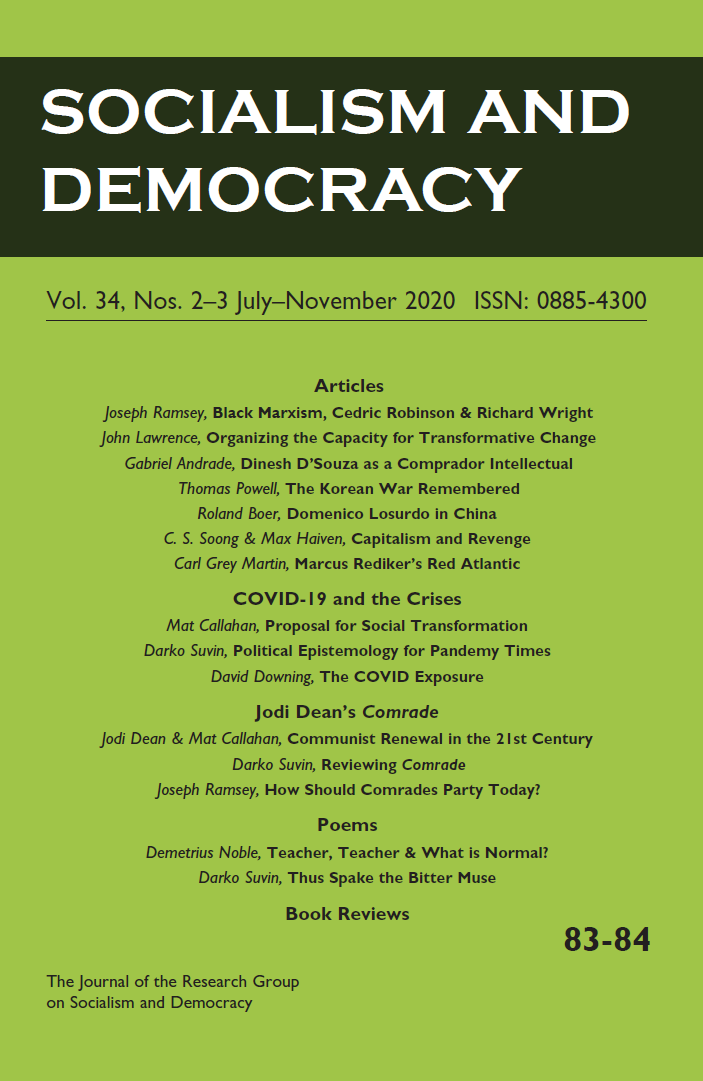Daniel Immerwahr, How to Hide an Empire: A History of the Greater United States. (New York: Farrar, Straus and Giroux, 2019). 528pp., $30 (cloth).
Todd Miller, Empire of Borders: The Expansion of the US Border Around the World. (New York: Verso, 2019). 304 pp., $29.95 (cloth).
In a 2004 academic article, anthropologist Engseng Ho describes the United States as an invisible empire. It is one, he says, characterized by a “see no evil” attitude by much of the country’s population regard to U.S. conduct abroad. What explains its invisibility (at least at “home”) is that the country’s ill-gotten territory and its peoples were incorporated under the national constitutional structure and overrun by a settler population. Also key are the ways in which the United States exercises power abroad. Rather than administer countries directly, for instance, the United States dominates large portions of the world via a network of military bases.
Historian Daniel Immerwahr is similarly concerned with U.S. empire’s invisibility, his focus is on imperialism largely of a formal sort. Drawing on the work of the late political scientist Benedict Anderson, Immerwahr invokes the concept of the “logo map.” In the U.S. case, he suggests, the country’s logo—were one to exist--would be the shape of the map of the continental United States (all states minus Alaska and Hawai’i). The problem with the logo, argues Immerwahr, is that it’s wrong. It fails to conform to the country’s legal borders, and hides the violence and inequities involved in its making. From the very establishment of the United States as an independent country to the present, it has been “a collection of states and territories. It’s been a partitioned country, divided into two sections, with different laws applying to each” (p. 10). Immerwahr thus seeks to illuminate what the United States would look like were the history to take seriously all who have counted or count today as U.S. American—in terms of the places and peoples formally administered within the ever-changing boundaries of the United States. In this regard, the “main contribution” of How to Hide an Empire “is not archival. . . . [Rather], it’s perspectival, seeing a familiar history differently” (p. 16). But if the history the engrossing book tells—of places such as Alaska, Guam, Hawai’i, Japan, and Puerto Rico—is “familiar,” this characterization applies to few U.S. Americans. Take the Philippines, a U.S. colony during the early decades of the 1900s. After the ongoing war in Afghanistan, the U.S. war to pacify the territory (it stretched from 1899 to 1913), is “the longest war the United States has ever fought” (p. 107), Immerwahr reports. As for World War II in the archipelago—particularly the inter-imperial battle between Japan and the United States that resulted in more than 1.6 million fatalities—he characterizes it as “by far the most destructive ever to take place on U.S. soil” (p. 212).
In bringing this often-hidden history to life, Immerwahr weaves together a rich tale, one informed by an impressive level of secondary and primary research. Full of fascinating stories—from about how the octagonal red stop sign went global to the origins of manila envelopes and folders (derived with Manila hemp, a crop exploited by the United States during its colonization of the Philippines)—the book makes the case that, as asserted in its final line. “The history of the United States is the history of empire” (p. 401). It is an empire that has had different faces, thus Immerwahr’s decision to tell the story of what he calls the Greater United States in “three acts.”
The first “act”—not the book’s main story, but rather its “launching point”—is westward expansion and the “displacement” of Native peoples. Immerwahr suggests that the creation of a massive all-Indian territory in the 1830s was the first U.S. colony. The second act begins with the acquisition of unpopulated guano islands in the Caribbean and Pacific (as a source of fertilizer for large-scale agriculture), and culminates in 1898 with the annexation of former Spanish colonies. The third act unfolds in the aftermath of World War II (at the end of which there were 135 million people living under U.S. administration—either as colonial subjects or under occupation—outside the then-forty-eight states). This “act” involves the United States giving up most of its overseas colonies (e.g., the Philippines) or converting them into states (Alaska and Hawai’i), or a political geographical status suggesting something less than coercive (unincorporated and organized territory in the case of Guam, for example).
Why the United States did so, argues Immerwahr, is explained not simply by the resistance of colonized populations, but also by a whole host of technological innovations, many of them devised by the military-industrial complex during the war, that made colonies of a traditional sort dispensable. The innovations ranged from synthetics that served as substitutes for raw materials (such as natural rubber) made inaccessible during the war, to planes and radios, which allowed for the overcoming of distance and arduous physical geographies for purposes of distributing goods and information. They also included DDT, penicillin, and cryptography, which, together, made it easier to penetrate foreign spaces and render them less hostile to U.S. presence. These “empire-killing technologies,” Immerwahr contends, “helped render colonies unnecessary. They did so by making movement easier without direct territorial control” (p. 282). The result is a “new pattern of global power, based less on claiming large swaths of land and more on controlling small points” (p. 216)—thus Immerwahr’s use of the term “pointillist empire.” It is one characterized by “foreign prisons, walled compounds, hidden bases, island colonies, GPS antenna stations, pinpoint strikes, networks, planes, and drones. This is the shape of power today,” he says. “This is the world the United States made” (p. 390).
The making and policing of territorial boundaries—the focus of investigative journalist Todd Miller’s latest book, Empire of Borders—also reflect “the shape of power today” on a global scale. So, too, does the massive socio-inequality that they embody. (Immerwahr acknowledges such inequities, but they are not central to his project.) Miller quotes George Kennan, the State Department’s first director of policy planning, in the late 1940s, a time when “hardened borders were almost unknown in the United States and the rest of the world,” to indicate what these lines of control are about: “We have to accept a certain unchallengeable antagonism between ‘him that has’ and ‘him that has not’ in this world.” Kennan’s words, Miller asserts, “set the conceptual stage for what was to come in terms of a U.S. structure of power and domination in the postwar world” (p. 5), with the U.S. border policing model “paramount to [its] scaffolding” (p. 11).
As his book’s subtitle suggests, Miller does not seek to explore the global system of borders, but rather the role of the United States in building boundaries beyond its official territory. He thus takes the reader to, among other locations, Guatemala and Honduras, Jordan, Kenya, the Philippines, and Morocco. These sites, Miller contends, are “all examples of the racialized, colonial history of political borders” (p. 13).
History is not destiny, however. The externalization of U.S. borders to these countries is an outgrowth of concerted efforts by myriad U.S. government entities—from the Department of Homeland Security and agencies within, particularly Customs and Border Protection (CBP) and Immigration and Customs Enforcement (ICE), and the Pentagon to the Department of State and its Bureau of International Narcotics and Law Enforcement Affairs. CBP now has twenty-one attaché offices around the world, Miller reports, while ICE has forty-eight. Meanwhile, U.S. authorities are present in airports worldwide—from Vancouver and Mexico City to Dublin and Abu Dhabi—to vet travelers to the United States. The presence manifests how much U.S. border-policing efforts abroad have grown—“exponentially” (p. 23) a CBP representative told Miller—in the post-9/11 era. Providing fertile soil for such growth is the financial largesse enjoyed by the border and immigration policing apparatus. In 2018, the combined budgets of CBP (under which is the U.S. Border Patrol) and Immigration and Customs Enforcement (ICE) was $23 billion. (By comparison, the 2018 military budgets for Australia and Canada were $26.7 and $21.6 billion, respectively.)
Such spending and associated support, combined with Pentagon training, have helped bring about newly-formed border patrols in Guatemala and Honduras, and assisted in the enhancement of Morocco’s boundary policing apparatus so that it better conforms to European Union standards. This has effectively created, writes Miller, “an EU-U.S. border front that bolsters the offshore border apparatus of both hegemons” (p. 231). In the case of the Philippines, a key component on CBP training has involved getting different agencies within the country working together more effectively “in a whole government approach to immigration policing,” while also fostering “a type of authority and power that follows the model of U.S. enforcement” (p. 126).
Although one could perceive these developments as enhancement of national sovereignty, Miller understands them as part of an emerging “global border system” (p. 157). It manifests an “arsenal of the Global North sorting, classifying, and repelling or incarcerating people from the Global South, while employing and deploying countries of the Global South as enforcers” (p. 158). In this regard, Miller argues that we need to appreciate empire as something beyond territorial expansion. Instead, it concerns “harmonized relationships” (p. 162) between countries, wealthy ones in particular, so to maintain a “caste system” that allows a global elite to cross national boundaries with ease, while stymieing the movement of a poor, global majority. (Israel-Palestine, Miller suggests in citing Israeli anthropologist and activist Jeff Halper, is a microcosm of this apartheid-like world. Not coincidentally, Israel is a world leader in surveillance and policing technologies.) It also allows for a form of “armored capitalism,” Miller suggests, by providing stability for investors, while also helping to fuel capitalism given the rapidly growing “homeland security” market, with current global revenues close to $400 billion.
According to The 9/11 Commission Report (2004), the “American homeland is the planet.” Miller quotes the document to illuminate the worldview that underlies the globalization of U.S. borders. Together, he and Immerwahr greatly help our understanding of how and why U.S. empire in various guises has come to be, how it has evolved across space and time, and various ways in which it persists across the globe. The question of how we use this enhanced understanding to challenge that empire now lies before us.
Joseph Nevins
Vassar College, Poughkeepsie, USA
jonevins@vassar.edu

